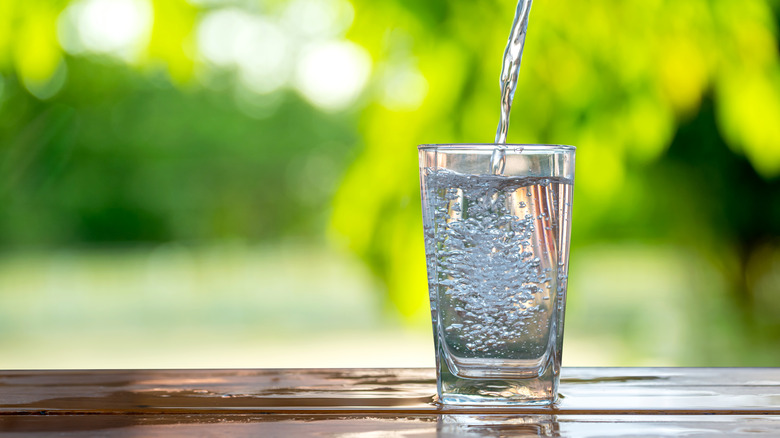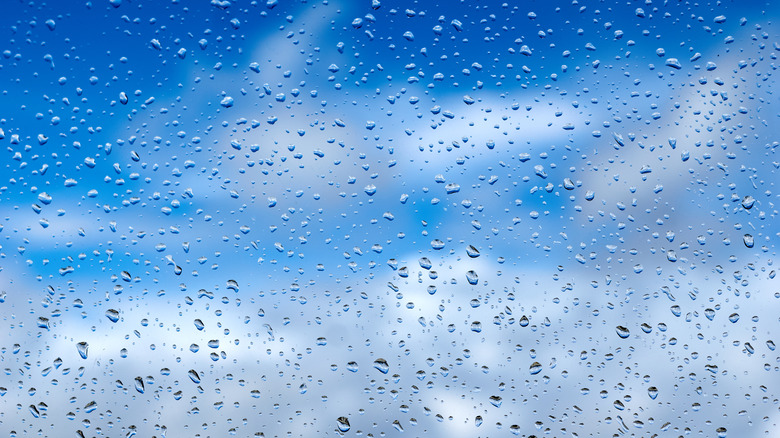How This Engineer Is Making Drinking Water Out Of Air
Water is one of the most important resources on the planet. It's recommended that we drink between 2.7 to 3.7 liters of H2O per day, says Mayo Clinic. And according to the World Health Organization, every person actually needs at least 7.5 to 15 liters of water a day to meet the very minimum basic needs of survival, hygiene, and cooking, in addition to hydration requirements.
Yet in many parts of the world, there isn't sufficient water. Science Advances estimates that 4 billion people face severe water scarcity at least once a month while half a billion people face severe water scarcity year-round. Even in parts of the United States, sustained drought conditions have impacted the availability of water. Recently, the massive Lake Mead reservoir experienced water shortages for the first time ever, triggering cuts expected to impact several states, Reuters reports. Consumers are facing water shortages at Costco and other retailers. California, which produces 25% of the country's food supply, is in an extreme drought, which is expected to impact production and increase prices at the grocery store (via Business Insider).
One scientist has a solution to water shortages
82-year-old Spanish engineer Enrique Veiga, and his company Aquaer, has created a device that can literally extract water from the air. As Business Insider explains, Veiga's machine uses electricity to cool air to the point of condensation, turning it into water. It's the same principle that creates condensation in air conditioners. Only in this case, the water is collected for consumption. Veiga's machine can produce between 50 and 75 liters a day, despite being small enough to be portable. A larger version of the device is expected to produce up to 5,000 liters a day.
Veiga has been working on this since the 1990s, when southern Spain experienced severe droughts. He has refined his machine to work in temperatures of up to 104 degrees Fahrenheit and low humidity of between 10 and 15%, ideal for arid areas and areas with drought conditions. His technology could prove extremely useful to extract some of the 13 sextillion liters of water that exist in the atmosphere at any given time (via Science Advances), especially in light of research predicting that 25% of the planet could end up in a state of permanent drought as a result of global warming, per UPI.

